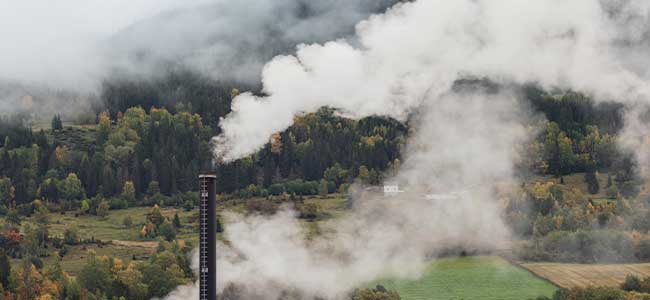
The State of Carbon Capture in 2024
Recent advancements in carbon capture technology and natural carbon sinks highlight the ongoing efforts and challenges in meeting global emissions reduction targets, emphasizing the need for innovative approaches and continued research.
- By Ellie Gabel
- Aug 16, 2024
Carbon capture encompasses a broad research area involving mechanisms to trap carbon dioxide emissions to prevent them from negatively affecting the atmosphere. What progress have people made in this area recently? Those developments can help interested parties understand what to expect during the coming months and years.
Applying Machine Learning to Close Utilization Gaps
One common obstacle associated with carbon capture technology is the difference between research progress and real-world implementation. However, researchers from several universities have worked together to minimize it. The conventional way to develop carbon capture technologies involves people developing the respective mechanisms and processes before assessing those possibilities' environmental and economic impacts.
However, this group developed an innovative platform that gathers various stakeholders’ opinions and perspectives at the beginning of the process rather than in those later stages. This four-layered solution uses machine learning and advanced simulations to find the most sustainable and effective solutions. One real-life example showed the platform could reveal the total CO2 emissions captured over three decades at an industrial facility. It also showed the associated costs, helping decision-makers potentially weigh various possibilities before choosing one.
Those involved in this research said it provides viable alternatives to the trial-and-error processes usually applied when exploring carbon capture options. One participant envisioned that engineers without extensive prior knowledge in this area could use this approach to discover applicable metal-organic frameworks, which are gaining ground in numerous applications, including carbon capture.
This specialized platform also has interactive features that allow clients to explore more than 1,200 materials and get details that help them understand the potential performance capabilities and downsides of those possibilities. Some gas separation membranes used for carbon capture have maximum pressure ranges of 83 bar and can tolerate high temperatures. Those characteristics make them ideal for current and future applications. Since many carbon capture technologies push CO2 through the membranes, high pressure tolerance can improve overall efficiency.
Finding New Details About Forests’ Carbon Capture Role
Carefully engineered solutions will undoubtedly play significant roles in carbon capture’s future, but some experts rightfully point out how nature can contribute to those gains. In one July 2024 study, researchers combined ground data with information collected by remote sensors to get better estimates about how forests aid carbon capture naturally. Those involved also wanted to determine how much regional challenges affected trees’ potential.
The findings showed trees pulled from the atmosphere almost half the emissions caused by burning fossil fuels between 1990 and 2019. However, the data also indicated that factors such as wildfires and insect outbreaks have caused a 36 percent reduction in the carbon sink capacity of Northern Hemisphere boreal forests. Conversely, temperate forests have become 30 percent more effective for this purpose. Researchers say reforestation is largely responsible for that gain.
Those involved with this study stress the importance of preserving what they call a “global forest carbon sink” through protective measures from climate change, policy changes and other concentrated efforts. They said these natural carbon capture mechanisms are especially valuable since they remained effective despite environmental events and shifts.
Identifying New Targets
The Paris Agreement is frequently discussed among individuals who care about this world’s climate change mitigation efforts. What role will carbon capture play in meeting the agreement’s targets?
A new study suggested the world must remove “7-9 billion tonnes of CO2“ annually by the middle of the century. However, current totals are far short of that range and primarily achieved by conventional methods, such as planting trees. The researchers also emphasized that emissions reductions will be the primary way to meet the Paris Agreement’s aims. Still, carbon capture methods are important, and applicable parties must deploy various options to make the necessary improvements.
However, as decision-makers assess various possibilities, they will undoubtedly prefer to prioritize the most cost-effective options. Calculations published in March 2024 examined several direct air capture methods, finding they will eventually become less expensive to deploy but still costlier than earlier estimates suggested. The outcomes showed that, by 2050, it will cost between $230 and $540 to remove 1 ton of carbon dioxide from the air, which would be twice as high as previous estimates.
However, when assessing the study’s three technologies, researchers concluded that none has a clear cost-related advantage over the others. They mentioned the need to continue aggressively developing and researching these technologies over the coming years. The more people know about them, the greater their likelihood of finding viable alternatives that could keep the expenses down and make carbon capture more attractive to the leaders who may choose it.
Carbon Capture Will Support Emissions-Related Progress
Numerous carbon capture developments have already occurred this year. So it will be interesting to see what happens during the rest of 2024. The ongoing efforts in this area will help people identify the most promising candidates when evaluating various technologies to meet current and future requirements.
About the Author
Ellie Gabel is a freelance writer with a passion for keeping up with the latest innovations in science, tech and sustainability. She also works as the associate editor for Revolutionized. When she's not working on her next article, you can find her relaxing with her husband and their cat.